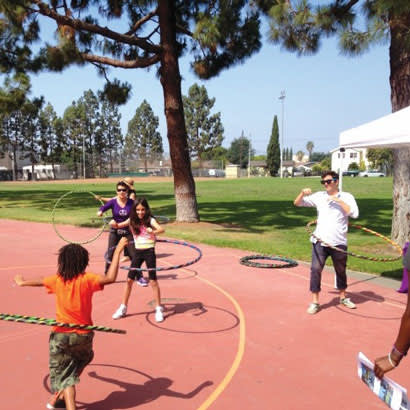
While the field of parks and recreation is often associated with fun and games, it should also be known for how it is advancing health and wellness. After all, local park and recreation agencies, including the Los Angeles County Department of Parks and Recreation (DPR) where I work, offer a variety of important health and wellness opportunities for residents in communities across the United States. As our nation continues to face serious health challenges such as increasing rates of chronic disease, a growing prevalence of sedentary lifestyles and rising healthcare costs, parks and recreation provide an effective and affordable solution.
The health benefits of parks and recreation programs are measurable, well-documented and quantified in numerous studies. Specifically, parks:
- Offer opportunities for physical activity which help to increase fitness and lower levels of obesity.
- Enable people to connect with nature, which is known to confer certain health benefits and enhance well-being.
- Improve mental health as parks can serve as venues for stress reduction.
- Mitigate the effects of climate change, and air and water pollution impacts on public health.
- Facilitate community interaction as parks can serve as formal and informal places where people meet.
- Reduce injuries as parks and trails provide safe spaces for people to play and exercise, away from busy streets.
Park and recreation professionals in Los Angeles County work closely with our colleagues in public health to ensure that the above benefits are realized, with DPR and the Department of Public Health (DPH) partnering on numerous planning and programming efforts. Recently, DPR, with the assistance of DPH, conducted the first ever Countywide Parks and Recreation Needs Assessment to engage all communities within L.A. County in a collaborative process to gather data and input for future decision-making on parks and recreation. The Parks Needs Assessment quantified the magnitude of need for parks and recreational facilities in cities and unincorporated areas, and determined the potential costs of meeting that need. Its findings were so compelling that the County Board of Supervisors decided to put a parks funding measure — Measure A — on the ballot which was passed by voters in November 2016 and will generate about $94 million annually for park projects. DPH also coordinated and consulted with DPR in the preparation of the Parks and Public Health in Los Angeles County report which complements the Parks Needs Assessment, and provides information on the important relationships between parks and public health.
The two departments have collaborated on key planning projects to improve park access, availability and safety, as well as infrastructure for pedestrians. For example, with DPH as a key supporter and contributor, DPR completed Community Parks and Recreation Plans to address the park needs of six underserved communities by creating additional green spaces and recreational amenities for residents. Implementation of the plans is underway and will reduce greenhouse gas emissions by increasing the number of residents who can walk, bicycle and take public transit to parks, and incorporating green building practices and improved water efficiency for irrigation. Another focus of the plans is carbon sequestration through tree planting at existing and future parks, trails and other public spaces. All of these improvements will enhance the quality of life and health for residents in the six communities.
Another example of DPR’s partnership with DPH is the Parks After Dark (PAD) program. PAD was created to make selected parks safer through positive community engagement, while providing greater access to free recreation, health and wellness programs. First launched in 2010, the program has focused on neighborhoods with high levels of gang activity and crime. PAD provides recreational sports, classes on healthy eating and exercise, concerts and movies, computer courses, as well as healthcare and social services, including mental health assessments, mammograms and other health screenings on Thursday, Friday and Saturday evenings from June through August. PAD expanded from three parks in its first year to 23 in 2017. In 2016, PAD received about 178,000 visits.
A recent UCLA report found that about 95 percent of people who participated in PAD in 2016 said they felt the program improved their relationships with neighbors, and of participants who described their own neighborhoods as “unsafe,” 7 in 10 said they felt safe while they attended park programs. The program’s budget was $2.3 million in 2016, but the report estimates that by reducing crime, it saved the county about $5.87 million in law enforcement costs that year. Researchers also estimated that wellness programs, such as Zumba and other physical activity classes, ultimately saved the participants and the county more than $500,000 in healthcare expenditures.
Parks and recreation have a big role to play in advancing health and wellness. Local park and recreation agencies, in collaboration with our partners in public health and other fields, must continue to ensure that our constituents have safe access to quality park and recreation facilities and programming, and support programs and policies that address health disparities, such as NRPA’s Safe Routes to Parks, 10-Minute Walk, Commit to Health and Healthy Aging in Parks campaigns

